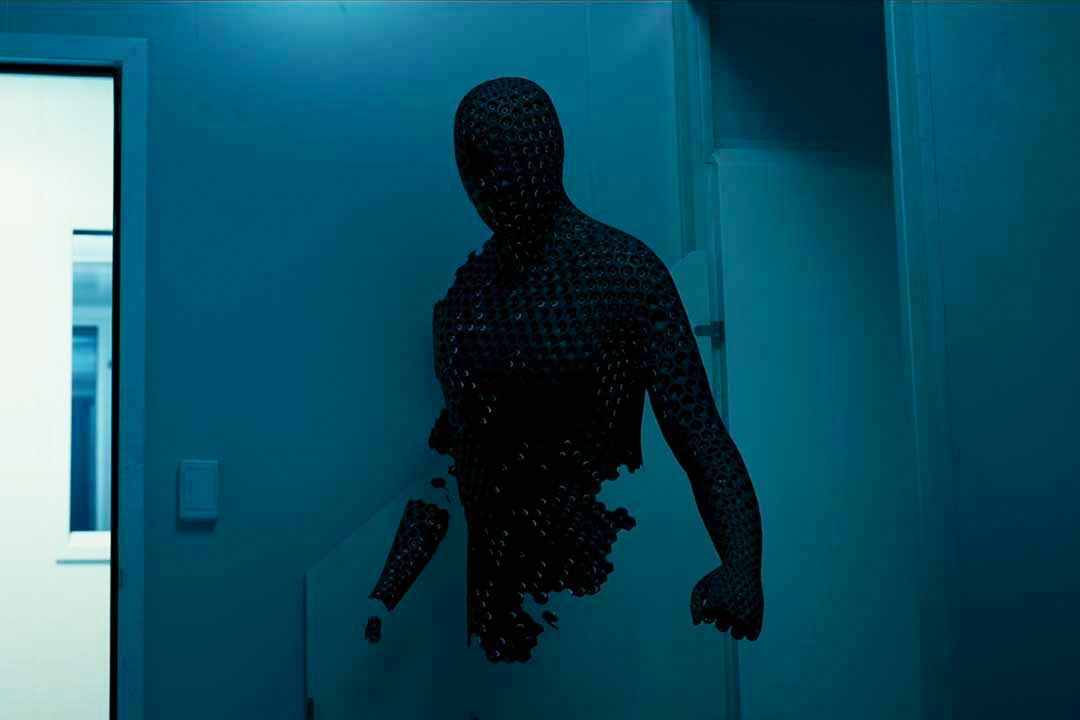Create a free profile to get unlimited access to exclusive videos, sweepstakes, and more!
How The 2020 Invisible Man Made Fighting Against an Unseen Enemy Look Real
It’s all up to the actor you can see: “If the fight sucks, it’s your fault.”

Of all the old-school movie monsters in its storied classic library, Universal Pictures had to go and dust off what might just be the trickiest one of all for a modern-day movie remake. Director Leigh Whannell set Elisabeth Moss and co-star Aldis Hodge, among others, with a decidedly unenviable task in 2020’s The Invisible Man (stream it here on Peacock): Convince audiences that every tense encounter with the film’s hidden baddie looks and feels like the unseen threat is actually scary — and, perhaps even tougher, that it's really there in the first place.
Special effects played a role in helping carry out that make-or-break mission, of course: A super-cool “sneak suit,” plus all the stunt and action expertise Whannell carried over from his previous movie Upgrade, did their part in making the Blumhouse-produced fright fest feel real. But the bigger sales job came in leaning on the actors themselves: After all, they’re the only part of the action that audiences could actually see — and as it turns out, that’s exactly how things went down on the set.
RELATED: Universal Classic Monsters, ranked: Frankenstein, Dracula, and more
Aldis Hodge: "If the Fight Sucks, it's Your Fault"
“When it comes to fights on screen, the person who sells the fight is the person who’s getting hit,” Hodge told SYFY WIRE not long after the movie’s arrival in theaters. “If you don’t believe the hit, you don’t believe the damage done — you don’t believe the dynamics. So you have to be really in sync and when you’re working with a partner, there’s a little bit of extra room to lean on. When it comes to working by yourself, it’s just you. If the fight sucks, it’s your fault.”
Yes, you’re reading that right: Hodge had no green-screen combatants in The Invisible Man; no hidden sparring partners who could be edited out later behind the scenes. “When it came to my stuff, they were like 'Well how agile and athletic are you?’ he recalled. “Because you’re gonna have to beat yourself up. I wasn’t fighting someone in a green suit — it was me throwing myself around.”
Tussling with the literal thin air is an especially nuanced fighting art; one that could’ve easily ushered The Invisible Man’s most crucial action sequences far beyond the line of believable horror and into the laughably sketchy realm of unintentional physical comedy. But Whannell’s prior action work on Upgrade paid off with refinements that carried over to The Invisible Man — with the twist, of course, that the “invisible” part of the fighting equation, in this case at least, was actually true… even behind the scenes.
“Everything leading up to it was a lot of training with the stunt team,” said Hodge. “We were working with the same stunt team that [Whannell] had on Upgrade. If you’ve seen Upgrade, then you already know how fantastic their work is and how they shoot things. The rig that they put the camera on is a rig they’ve built that’s special to Leigh and what he’s doing.”
Thankfully, it all worked, of course: Critics loved The Invisible Man and praised both Moss and Hodge for performances that effectively persuaded viewers that the movie’s abusive boyfriend (played in the non-invisible scenes by Oliver Jackson-Cohen) had actually hit on a tricky technology that let him hide himself in plain sight. Keep an eye out for the way Moss and Hodge cleverly play against an enemy that’s really, truly invisible when you stream the film again — or, better still, if it’s your very first time.
Either way, The Invisible Man is now out of on-demand hiding and ready to stream anytime on Peacock.

























